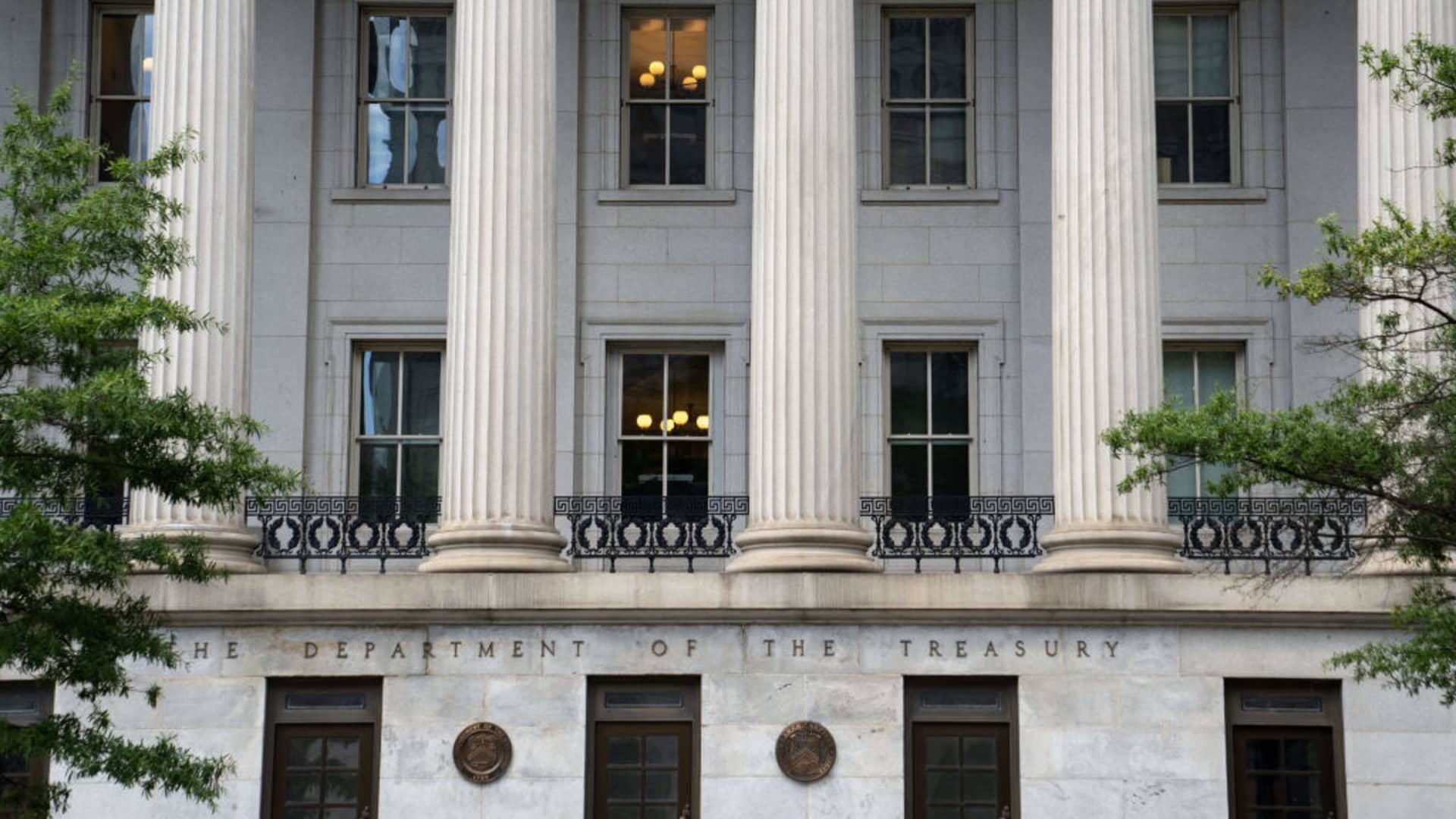The US Treasury building in Washington, DC, US, on Tuesday, Aug. 15, 2023.
Nathan Howard | Bloomberg | Getty Images
This report is from today’s CNBC Daily Open, our new, international markets newsletter. CNBC Daily Open brings investors up to speed on everything they need to know, no matter where they are. Like what you see? You can subscribe here.
What you need to know today
The bottom line
At 4.332%, the 10-year Treasury yield’s at its highest in 16 years. That represents a risk-free, long-duration asset with relatively high returns, weighing on the stock market. The logic is: Why should traders invest in stocks that may not return as much, or just slightly more, when there’s an asset class that guarantees a 4% return?
As Rupert Thompson, chief economist at Kingswood Group, told CNBC, “Cash is now yielding 5% in the States, short-dated bonds are yielding 5% plus, so equities for the first time in a long time have actually got some real competition.”
Typically, stocks — if they do well — tend to return more than a risk-free asset, precisely because it isn’t certain stocks will rise. That’s called the equity risk premium, a return that’s supposed to compensate stock investors for the chance that they might lose money. But, as CNBC Pro’s Bob Pisani notes, the premium is below 1% now. Historically, it’s been between 2% and 4%. In other words, stocks are looking much less attractive than Treasurys.
Another potential issue that could crop up with high Treasury yields is that it could make the Federal Reserve’s job tougher. Apollo’s chief economist Torsten Slok warned that “long rates moving up is indeed a bit more challenging, in terms of getting the economy to that soft landing.” While “the Fed can control short rates,” long rates going up can introduce “significant risk” to the economy, such as the recent Fitch downgrade and quantitative tightening.
It wasn’t a surprise, then, that stock markets fell Tuesday. The S&P 500 slid 0.3% and the Dow Jones Industrial Average lost 0.5%. But the Nasdaq Composite edged up 0.06% to avoid two consecutive days of losses — despite Nvidia retreating 2.9% on the eve of its earnings report.
But don’t panic. “We’re in the pullback phase of a bull market,” said Adam Turnquist, chief technical strategist at LPL Financial. That is, it’s still too early to be bearish on stocks. Indeed, Yardeni Research president Ed Yardeni told CNBC he thinks “the market’s going to hang in there” — and “a year-end rally will bring the S&P 500 back to something like 4,600.” That implied increase of almost 5% in stocks — while not certain — would, however, certainly give Treasurys a run for their money again.

